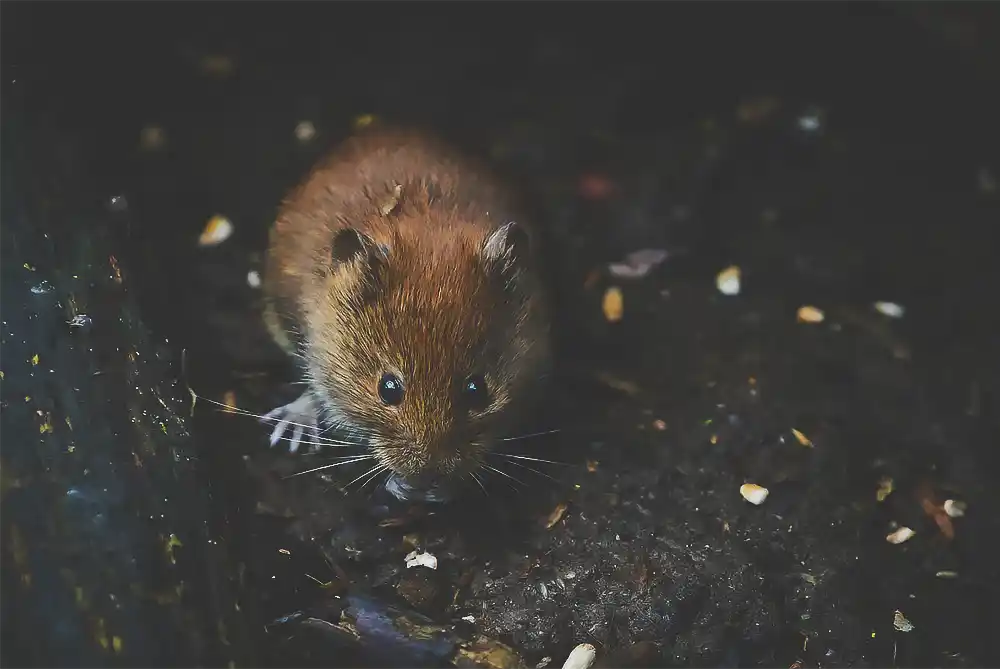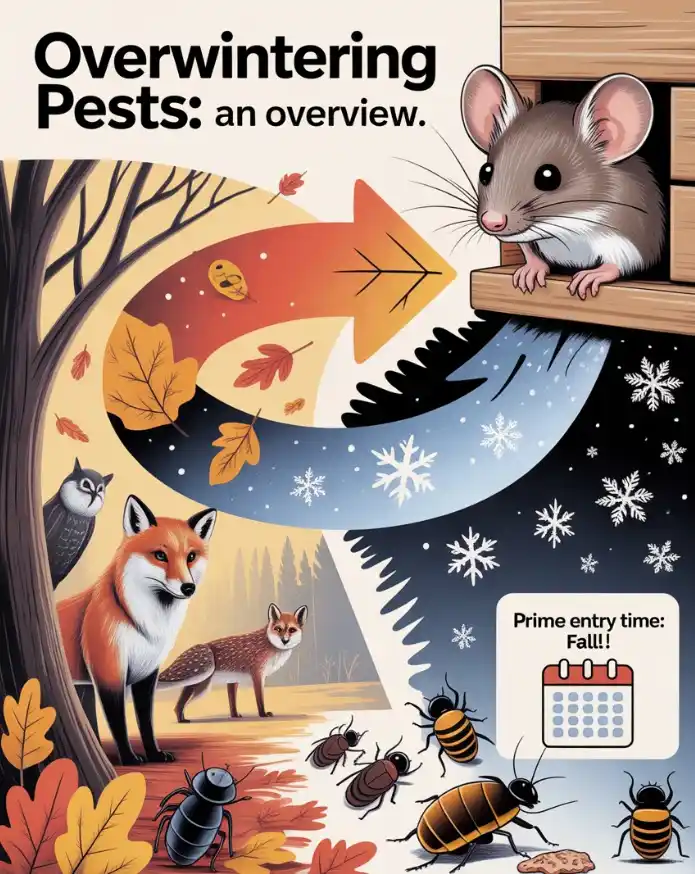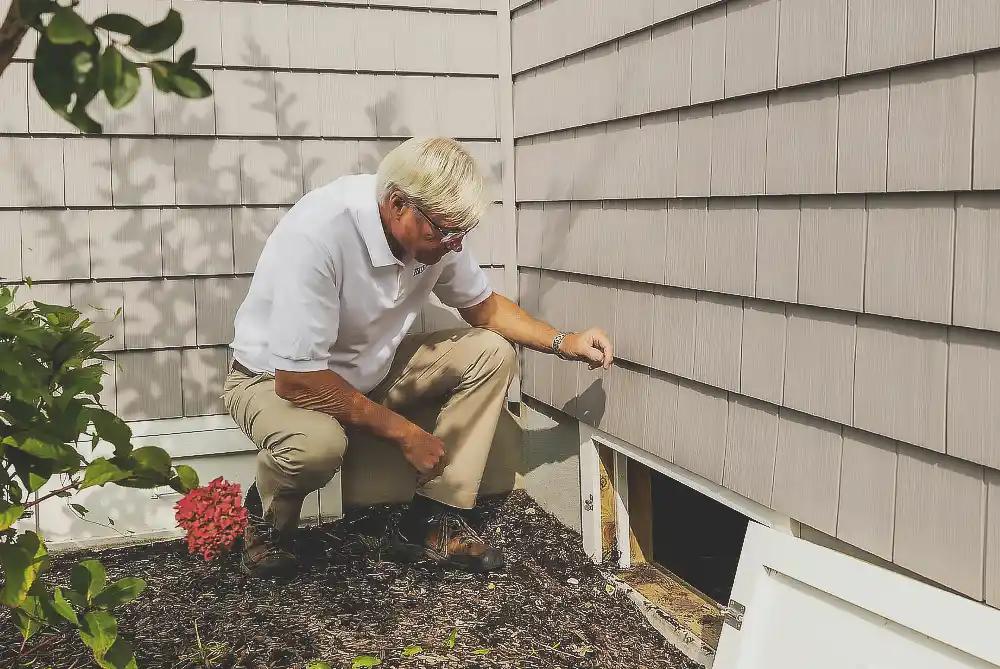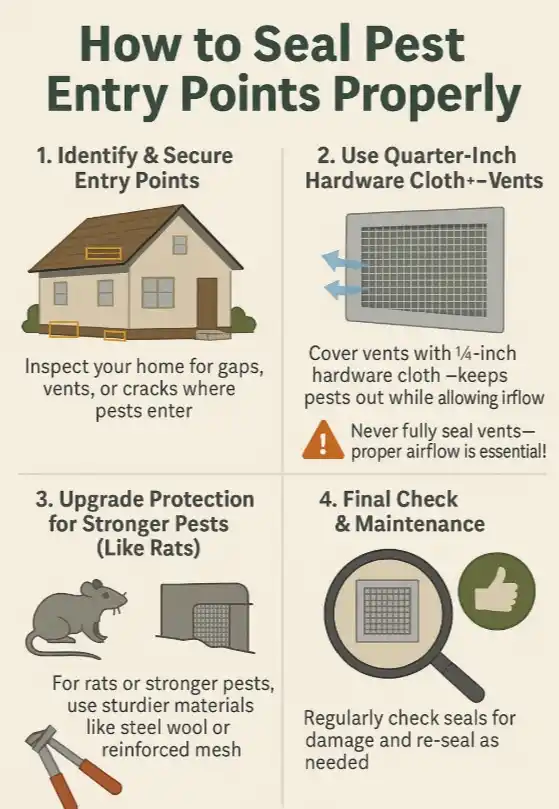Want to learn how to keep mice and overwintering insects like stink bugs out of your home this fall? An early inspection and proper sealing of entry points can help.
Overwintering Pests: An Overview
From stink bugs to mice, these are critters that you may be familiar with or you may expect to see this time of year.
The biggest concern for most people is the Peromyscus mice. This mouse spends most of its life outdoors foraging on natural food sources. But then in the fall, it will enter buildings to find a suitable place to nest and protect itself against cold temperatures.

Similarly for the insect pests that are seen, they’re doing a very similar thing. They’re coming indoors strictly for the purpose of finding protection against cold temperatures, against predation, and maybe against desiccating or drying winds in the wintertime.
A variety of insects do that. This includes:
- The brown marmorated stink bug
- The Western conifer seed bug
- The boxelder bug cluster fly
- Lady bird beetles
- The elm leaf beetle
Why Do They Enter?
It’s for protection against the cold. These particular pests don’t want to be out in the cold just like people don’t want to be in the cold during the wintertime, and their behavioral response to that is to enter structures or something that approximates a structure.
In nature, the brown marmorated stink bug, for example, will hide under loose bark of a tree. But now that there are structures nearby to where they’re performing their summertime functions, they enter those structures in the fall.
Stink bugs will be between pieces of wood in a garage for example. Rodents are doing a very similar thing where they are looking for protection and enter homes in the fall. So protection from the elements is key.

What Attracts Rodents?
Rodents are also looking for places that are providing warm air currents. So if there is a door that doesn’t close completely and warm air is emitting from that, that’s really attractive to a mouse that’s walking along the perimeter of the home. This may signal to them that this is a great place for them to spend their winter.
Also, if there’s food odors emanating from that source, it would be highly attractive to rodents.
Step 1: Detail-Oriented Inspection
The first step that is recommended is a detail-oriented inspection, to identify entry points and attractive conditions around the home. This is the perfect time to start this inspection, as these critters are trying to get indoors as the seasons change.
Exterior Walk Around
When outside, do a detailed walk around the home, and look for openings around things like pipes. Openings can be found around an oil tank inflow and the exhaust vent. There could also be openings at the sill plate, where the below ground parts of the home, meet the above ground parts.

In other words, where the concrete or cinderblock interact with the wood portions of a building. Inspect this closely, it would require getting down low or using hands to inspect this, being very careful of things like spiders and other biting insects that could be under that sill plate. Wearing gloves or using some kind of tool to probe that area may be helpful. These are two very common entry points for pests into the home.
Consider the Size of Openings
Think about the size that would allow these pests to enter the home. For mice it’s based entirely on the size of their skull.
The opening sizes to keep in mind are the size of a pencil and dime. For a rodent, the height of its skull is about the size of a pencil. So, if a pencil can fit underneath a doorway, for example, a mouse can fit its way underneath there. If it’s a round opening, that the rodent is going through, the width is a little bit larger than the height. So it needs to be larger, up to about the size of a dime for that mouse to squeeze through.
For insects, it can be a much smaller opening. Often, the analogy of the thickness of a credit card is given. Just a couple of millimeters can allow some of these insects to squeeze in.
Exterior Inspection Form
One of the things that can be used while doing an inspection is an exterior inspection form. This is going to help figure out the areas that are conducive to pest entry.
An exterior inspection would involve keeping in mind to start and end at the same place during the inspection. This will ensure that the entire perimeter of the home is seen, and no points of entry are missed. Walk slowly, look up, down. Get down to look up under at that sill plate. And then return back to the starting point.
As this is done, identify areas that have an entry point, that would allow pests to enter. Also indicate any conducive conditions. For example, if there’s a dog bowl with food, if there’s firewood stacked immediately adjacent to the home, and potentially in the yard there could be dog poop that would be attractive to things like mice.
Look for those entry points, looking for evidence of a pest coming in. In the case of mice that have entered the home, they’ve chewed through weak window screening to gain access into a vent.
Step 2: Seal Any Entry Points
The next step then would obviously be to seal any entry points that would allow these pests to come in. Quarter inch hardware cloth can be installed on a vent. This allows for airflow to continue to occur. It is important to not seal this space and prevent the breathing that’s required of this.
If the pests that are being dealt with are something like a rat that’s stronger and able to get through sturdier materials, different products will have to be used for that type of exclusion.

Material Selection
One of the products that could be used, are stainless steel metal mesh fibers. These are abrasive to chewing rodents, as they try and pull on this it irritates their gums – they don’t want to continue to chew on this. So, this is one technique that can be used for small openings. This is not steel wool. Steel wool over time will rust, become brittle and can be easily removed by rodents.
Another thing to consider is that when sealing openings around doors and windows, sealants should be used and not caulks. Caulks – as they dry, they can pull away from the surfaces where they’ve been applied. And this leaves subsequent entry points for pests, especially insects to enter.
Look for elastomeric sealants that remain flexible – keeping contact with multiple surfaces and not pulling away. There are recommendations for the types of products to select for this on the SCOPE website.
Select the right tool for the job. There’s a number of door sweeps that can be purchased and installed from big box stores or specialty companies. It’s important to consider if the pest that is present is able to overcome that.
For example, mice have chewed an opening to allow themselves to enter right through a door with a rubber gasket door sweep. This can be done in a single night, one mouse can chew its way through some of these rubber gasket door sweeps.
If it’s known that a particular pest exists and there’s a high pressure on the outside of the home, a more expensive product that’s able to prevent them from entering may be preferable rather than the standard or generic type of door sweeps that are really designed for maintaining indoor temperatures not for keeping pests out.
Common Overlooked Entry Points
One common entry point for these overwintering pests that many people overlook are weep holes. Very soon brown marmorated stink bugs will start to land on the outside of homes and trying to get indoors. One of the common ways that they get inside, are these weep holes that are designed to allow water to be eliminated from a window casing. But when they’re installed they have a cover on them, that allows water to come out, but prevents insects from going in.
Over time, they may fall out, they may be damaged or broken. This would provide access for an insect to enter the window frame. Then if the window is opened at all, they can get indoors. Another one that is seen is a torn window screen. Repair any tears that occur in the window screen that would permit, an insect large enough as a brown marmorated stink bug to enter.
An important consideration for this weep hole is that the products that are used must not impede the function of the weep hole. Something like a sealant should not be used to fill that weep hole because water will accumulate on the inside.
People may feel like they want to make a very tight structure and prevent anything from getting in. But then new issues of moisture problems may be created.
There are standard covers that would allow water to come out but no insects to go in. Also those stainless steel metal mesh fibers have been shown to allow water to come out, but prevent pests from entering.
Another important consideration this time of year is to remove those window air conditioning units before the major invasion of stink bugs occurs. These insects can fit through very tiny openings. They can get underneath the window that’s holding it in place and come between the window and the air conditioning unit. Those should be removed and the windows are sealed tightly before that invasion event occurs.
Proactive vs. Reactive Pest Management
It is important to consider being proactive rather than reactive. Instead of sealing a little hole underneath the door that’s allowing mice to come in, most people resort to just putting down a pesticide product and hoping that will solve their problem. But in this instance, the pest is being allowed to come in and then hoping it feeds on a bait, rather than preventing it from coming in to begin with.
As this fall is approached, doing that inspection, finding those entry points and sealing them, and preventing the pest problems is key, rather than having to manage those mice and insects in the home later into the fall.
Conclusion
To effectively pest-proof your home this fall, remember to conduct a thorough inspection to identify potential entry points for pests like mice and overwintering insects. Sealing these openings with appropriate materials and addressing conducive conditions proactively can help prevent infestations and maintain a pest-free environment.
“Don’t miss out! Check out the video below for a closer look and all the details in action!”